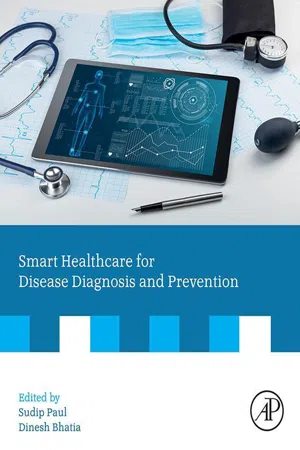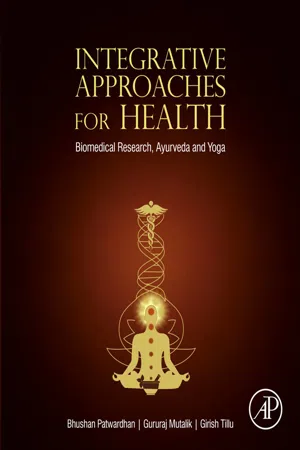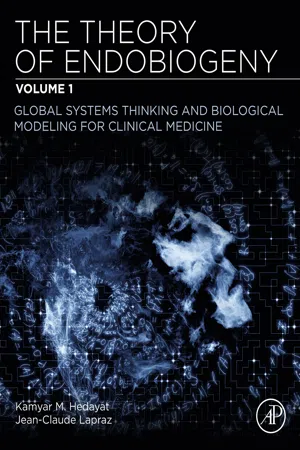Biological Sciences
Organ Systems
Organ systems are groups of organs that work together to perform specific functions in the body. Examples of organ systems include the digestive system, respiratory system, and circulatory system. Each system is made up of multiple organs that collaborate to carry out essential processes, such as nutrient absorption, gas exchange, and blood circulation.
Written by Perlego with AI-assistance
Related key terms
7 Key excerpts on "Organ Systems"
- No longer available |Learn more
Exercise Physiology
for Health and Sports Performance
- Nick Draper, Helen Marshall(Authors)
- 2014(Publication Date)
- Routledge(Publisher)
Cells work in cooperative groups to maintain life, forming the basis for the tissues and organs which in turn comprise the Organ Systems that enable the body to function. The levels of organisation within the body, from the chemical to the whole body, or organism level, are illustrated in Figure 3.1. Tissues, such as the cardiac muscle illustrated in Figure 3.1, are comprised of specialised cells and their products that perform a specific function within an organ and within the body. This can be demonstrated by the heart which represents a structure composed of cardiac muscle tissue along with connective and epithelial tissues (Figure 3.1). Figure 3.1 Levels of structural organisation. (Source: Martini, F. H. and Nath, J. L. (2009) Fundamentals of Anatomy and Physiology, 8th edition, New York: Benjamin Cummings) Knowledge integration question Think of an example to describe how Organ Systems can work together during exercise to maintain performance. There are 11 Organ Systems commonly described within the body and these, along with their functions, are shown in Table 3.1. The primary role of cells and the Organ Systems they comprise is to maintain homeostasis. The following sections of this chapter describe the structure and function of cells and the importance of homeostasis to human functioning. Within this textbook seven of the eleven Organ Systems in Table 3.1 are covered in detail due to their importance for sport performance. The digestive system, because of its role in catabolising the food we eat, was covered in Chapter 2, followed by presentation of the control systems (nervous and endocrine) in Chapter 4. Then in Chapter 5, where the focus is upon the fundamental systems for human movement, the structure and functioning of the skeletal and muscular systems is covered. The final two Organ Systems covered in this book, the cardiovascular and respiratory systems, which play roles in transport and exchange, are covered in Chapter 6 - Sudip Paul, Dinesh Bhatia(Authors)
- 2020(Publication Date)
- Academic Press(Publisher)
The field of physiology is one that has been extensively discovered and explored in the past and at present it is the subject of increasing interest for obvious reasons. The above review history discusses only the initial discoveries in physiology and discoveries are still in continuation from the day of Harvey’s experiment till today. At present also it is the subject of increasing interest and will remain so in future.19.1.2 Biological systems
The human body contains a number of systems that work together to maintain homeostasis [2] . The functioning of the human body is regulated by the number of system like digestive, circulatory, respiratory and urinary systems perform processing and transporting functions that maintain the normal condition of the body. The musculoskeletal system explains the movement phenomena. The chief systems enclosed in the study of human physiology and their functions are as follows:- 1. Integumentary system : Skin and its derivatives
- 2. Musculoskeletal system : Skeletal and muscles
- 3. Digestive system : Breakdown of complex food material into simple one.
- 4. Respiratory system : Exchange of gases between human body and environment
- 5. Circulatory system : Circulation of different element in the body
- 6. Nervous system : Coordinates and controls all the activities
- 7. Reproductive system : Sex organs working together for reproduction
- 8. Endocrine system : Chemical mediators regulating the activity of cells or organs
- 9. Excretory/urinary system : Removal of waste products from the body
- 10. Immune system : Defence mechanism of body
19.1.3 Branches
Initially physiology was considered a single branch of biology but with the vast discoveries of bodily system there have been great number of disciplines that encompasses as below:- • General physiology - Study of the vital phenomena concerning the living organism as a whole.
- • Cellular physiology
- eBook - ePub
Integrative Approaches for Health
Biomedical Research, Ayurveda and Yoga
- Bhushan Patwardhan, Gururaj Mutalik, Girish Tillu(Authors)
- 2015(Publication Date)
- Academic Press(Publisher)
Chapter 5 Systems Biology and Holistic Concepts Abstract Systems biology is an important emerging approach, which considers the interdependence of cells, tissues, and organisms in complex, yet interconnected metabolic networks. The message from systems biology is that one should not consider any biological molecule, process, or phenomenon as parts in isolation but view them as interdependent parts of the whole organism. These concepts have startling similarities with the holistic concepts of Ayurveda and Yoga. This chapter recalls the basic concepts of Ayurveda, which explain the relationships between the microcosm and macrocosm. The authors present a comparative picture of principles of systems biology, and the holistic concepts of Ayurveda. This chapter provides a brief account of a few ongoing research projects studying the basic principles of Ayurveda and biology. The authors discuss how Ayurvedic concepts may open new research avenues for future biomedical research. Keywords Biological systems; Complexity; Holistic; Homeostasis; Metabolomics; Metabonomics; Networks; Reductionist; Whole systems The cure of the part should not be attempted without the cure of the whole. Plato The Philosophical Basis to Systems Approach In its preface, the latest edition of the most popular book, Guyton and Hall Text Book of Medical Physiology states: “Indeed, the human body is much more than the sum of its parts, and life relies upon this total function, not just on the function of individual body parts in isolation from the others.” This clearly indicates how the thinking in mainstream biology is moving toward holistic approaches. The new recognition of a systems approach in biology has significant impact on health, wellness, diseases, therapeutics, and future health care - eBook - ePub
Teaching Biology in Schools
Global Research, Issues, and Trends
- Kostas Kampourakis, Michael Reiss, Kostas Kampourakis, Michael J. Reiss(Authors)
- 2018(Publication Date)
- Routledge(Publisher)
Complex systems are prevalent in many scientific fields, and at all scales—from the micro scale of a single cell (such as a human fertilized egg) to macro complex systems such as cities or ecosystems (Yoon et al., 2017). In the field of biology, complex systems are found within individual cells, in which complex molecular networks connect signals from the extra-cellular environment to intracellular responses (Chasman et al., 2016). They are also found in individual organisms at the level of physiology, maintaining homeostasis in a variety of different dimensions, like blood sugar and body weight (Rosenbaum & Leibel, 2016). On an even larger scale, interactions between organisms form additional complex systems at the level of biological societies, such as social insect colonies (ants, for example), which are formed by interactions between organisms, each of which is a complex system of its own (Greenwald et al., 2015). Such natural systems are typically dynamic and are often held in states of equilibrium with other interdependent systems, and the interactions within and between them can be unpredictable. Disturbing this web of interconnections can have major implications, as effects cascade across associated networks (Stewart, 2012). Understanding the complexity of natural systems is therefore crucial to a proper understanding of what they are and how they work.Complex systems are comprised of sub-systems, exhibiting outcomes that arise from the interactions between their structures. These outcomes are the results of causal elements participating in causal event chains that vary in temporal and spatial dimensions (Keynan et al., 2014). Thus, a complex system can be generally described as an entity consisting of a large number of structures, at different levels of organization, in which various processes occur. A complex system functions through the mutual interaction of its various components, which work together to bring about a singular function. The interactions within the system are influenced by feedback loops and are usually nonlinear (Ladyman et al., 2013). - eBook - ePub
- James Bobick, Naomi E. Balaban(Authors)
- 2019(Publication Date)
- Visible Ink Press(Publisher)
Neurons are divided into three main types: 1) sensory neurons; 2) motor neurons; and 3) interneurons (also called association neurons). Sensory neurons conduct impulses from sensory organs (eyes, ears, and the surface of the skin) into the central nervous system. Motor neurons conduct impulses from the central nervous system to muscles or glands. Interneurons are neither sensory neurons nor motor neurons. They permit elaborate processing of information to generate complex behaviors. Interneurons comprise the majority of neurons in the central nervous system.ORGANS AND Organ Systems What is an organ?An organ is a group of several different tissues working together as a unit to perform a specific function or functions. Each organ performs functions that none of the component tissues can perform alone. This cooperative interaction of different tissues is a basic feature of animals, including humans. The heart is an example of an organ. It consists of cardiac muscle wrapped in connective tissue. The heart chambers are lined with epithelium. Nerve tissue controls the rhythmic contractions of the cardiac muscles.What is an organ system? An organ system is a group of organs working together to perform a vital body function. Vertebrate animals have twelve major Organ Systems. Organ Systems and Their FunctionsOrgan System Components Functions Cardiovascular and circulatory Heart, blood, and blood vessels Transports blood throughout the body, supplying nutrients and carrying oxygen to the lungs and wastes to kidneys Digestive Mouth, esophagus, stomach, intestines, liver, and pancreas Ingests food and breaks it down into smaller chemical units Endocrine Pituitary, adrenal, thyroid, and other ductless glands Coordinates and regulates the activities of the body Excretory Kidneys, bladder, and urethra Removes wastes from the bloodstream Immune Lymphocytes, macrophages, and antibodies Removes foreign substances Integumentary Skin, hair, nails, and sweat glands Protects the body Lymphatic Lymph nodes, lymphatic capillaries, lymphatic vessels, spleen, and thymus Captures fluid and returns it to the cardiovascular system Muscular Skeletal muscle, cardiac muscle, and smooth muscle Allows body movements Nervous Nerves, sense organs, brain, and spinal cord Receives external stimuli, processes information, and directs activities Reproductive Testes, ovaries, and related organs Carries out reproduction - eBook - ePub
The Theory of Endobiogeny
Volume 1: Global Systems Thinking and Biological Modeling for Clinical Medicine
- Kamyar M. Hedayat, Jean-Claude Lapraz(Authors)
- 2019(Publication Date)
- Academic Press(Publisher)
Fig. 2.5 ).Fig. 2.4 Liver as a system with subsystems. (© 2014 Systems Biology Research Group.)Fig. 2.5 The liver is a subsystem within networked subsystems within the global whole. Each system influences and is influenced by the others. (© 2014 Systems Biology Research Group.)Determining the level and method of study
Biological information is encoded in a multi-scale information hierarchy: DNA, RNA, proteins, interactions, biological networks, cells, tissues, and organs, individuals and, finally, ecologies. The important point is that the environment impinges upon each of these levels of the hierarchy and modulates the digital informational output from the genome. Thus, systems-level investigations demand the collection of data at each relevant level of the hierarchy between the phenotypic measurement (features of the cell) and the core digital genome.Leroy Hood et al., Institute for Systems Biology.27If the human organism is to be studied as a system, the level of study and the method of bioinformatics should be carefully considered so as not to confuse cause with mechanism of disease. There are three levels of activity within the system that can be studied in four ways:- 1. Cell, e.g., cell metabolism for ATP production
- 2. Organs, e.g., hepatic metabolism of urea
- 3. Global system, internal regulation, e.g., role of perfusion pressure in global metabolism
- 4. Global system’s interaction with its environment, e.g., seasonal adaptation of metabolism
For the first half of the 20th century, “naïve reductionism” focused primarily on the first level: the cell. The clinical result was the production and use of drugs that either inhibit or stimulate (i.e., antiinflammatory, aromatase inhibitors, diuretic, beta-agonist, etc.), or replace deficient physiologic products (i.e., cortisol, estradiol, insulin, thyroxin, etc.). The mid-20th century gave rise to molecular biology and an intense study of the role of DNA. Advances in high-throughput assays and bioinformatics since the late 20th century have allowed for the complexity and systems-behavior of the cell to be clearly demonstrated. The response of many researchers has not been to move up to higher levels of organization to view how the body functions as a whole, but to move to the lowest level of activity: the genome (genomics), and the attendant “–omics” that arise from such study: proteomics, transcriptionomics, metabolomics, etc.28 – 32 - eBook - ePub
Reporting The Middle East: Challenges And Chances
Challenges and Chances
- Dan Caspi, Daniel Rubinstein(Authors)
- 2017(Publication Date)
- WSPC(Publisher)
While coarse-grained models can have enormous descriptive value, their use in addressing detailed questions are limited by their mathematical intractability; for example, there can be hundreds of equations at the molecular reaction level, each with many parameters. There might be fewer equations at the cell level but their parameters are determined by detailed functions that vary significantly with the equilibrium state of the cell. Finegrained models are used in systems biology to understand cellular mechanisms, whereas coarse-grained models help us visually communicate global network operations. A comprehensive mathematical genome-scale model for how a mammalian cell functions, including all signaling, metabolic, and regulatory functions, does not currently exist and may never exist because of how rich the emergent properties become as the dimensionality of the models increases in scale to that of the human genome. It is likely that different models may be required for answering questions about biological systems at different scales, and there may never be a comprehensive model of a mammalian organism. For this reason, generalized systems analysis that operates at all scales could provide the best answers. For example, medical conditions are often most effectively managed on the scale of the organism or population even when the root causes operate at a microscopic level.Fig. 5.3 A graph-based representation of a hypothetical biological hierarchy. The highest level is dominated by interactions among organisms in the population and their environment. Within an organism, functions cluster around organs. Organs are collections of different tissue types that are composed of cell types classified by their functional properties. Properties at each level are interconnected broadly (not shown) with properties at other levels. Graphs representing biological systems are not fundamental; they change as required to help researchers understand biological properties.Example. Consider human infections by the hepatitis B virus (HBV). Some people have strong natural immune responses to acute HBV exposures that quickly deactivate the virus, but only after inflicting extensive hepatocyte (liver cell) damage that severely impairs liver function. Those with a weaker immune response may have less hepatocyte damage, but retaining the virus is a progression to chronic hepatitis B infection with long-term risk of developing liver cancer (hepatocellular carcinoma). The chance of chronic HBV patients developing liver cancer is 100 times that of the uninfected population, and the 5-year survival of these cancer patients is only 10%. Neither system response can be classified as desirable.The best protection from HBV today is immunization during infancy. Medicine focuses on immunizations and treatments of individuals and populations – a large-scale system view – because of the importance of minimizing exposure and the central role of the immune system in determining injury and prognosis. Nevertheless, treatments themselves are based on the reductionist science of cellular decision making. Physicians and government officials must keep in mind the human system at all scales as they formulate medical solutions for individuals and make policy-level healthcare decisions for the population. Both can be overwhelming jobs when done well.
Index pages curate the most relevant extracts from our library of academic textbooks. They’ve been created using an in-house natural language model (NLM), each adding context and meaning to key research topics.






